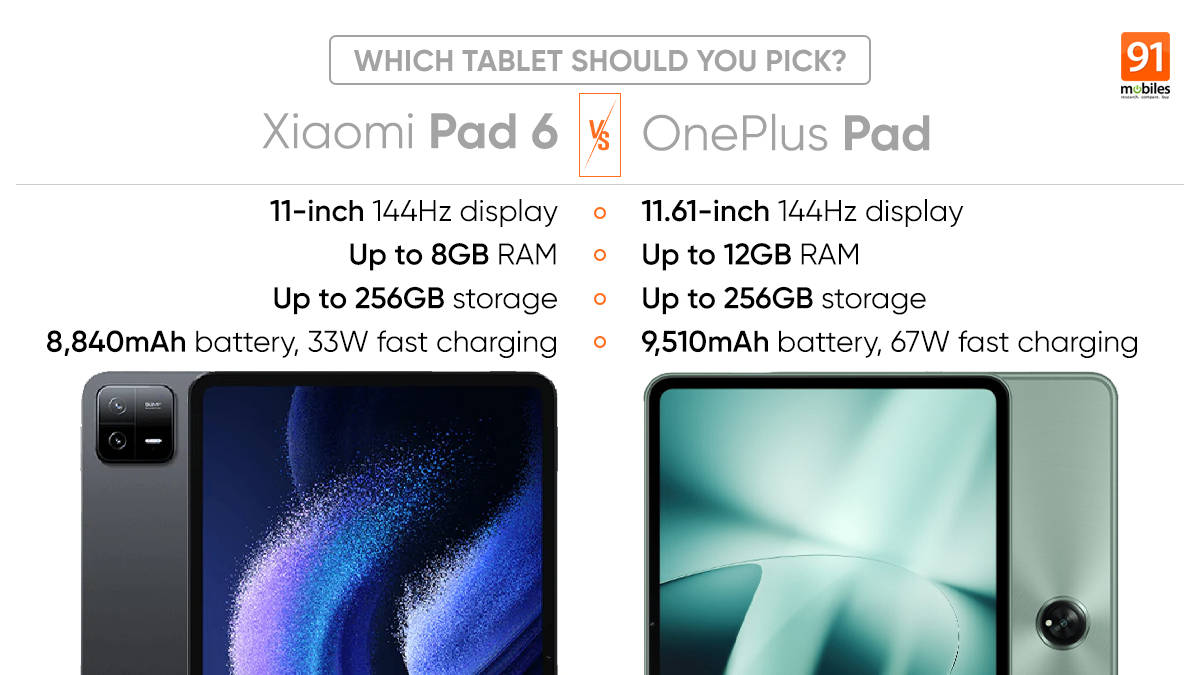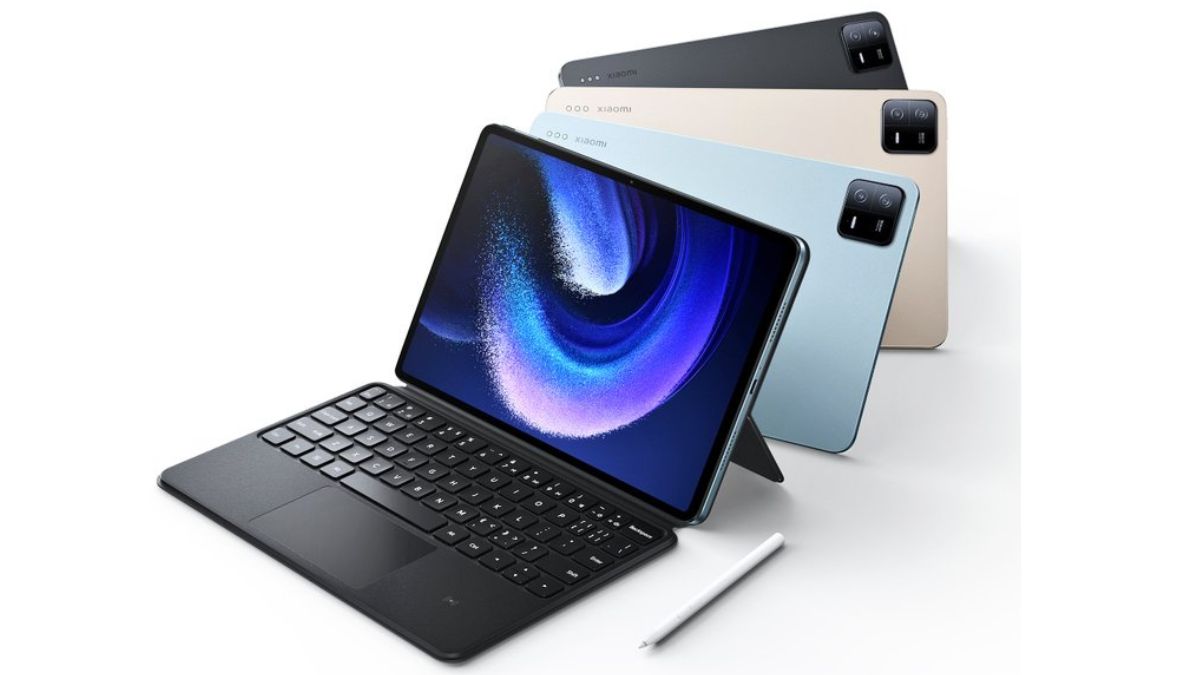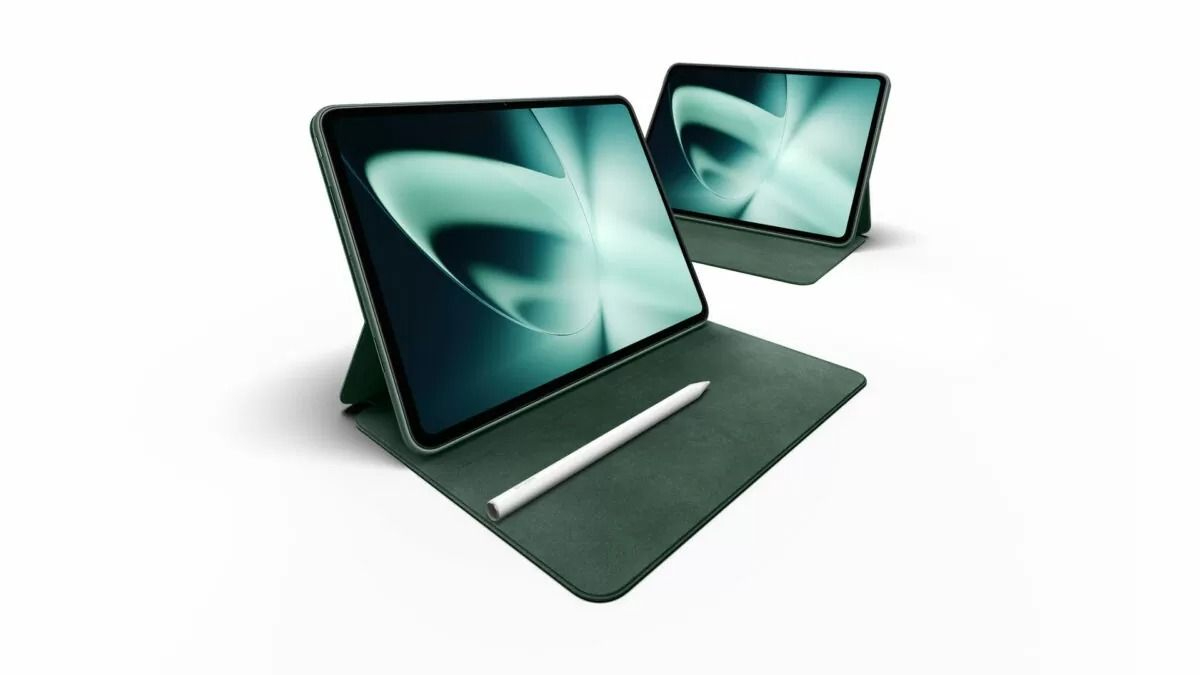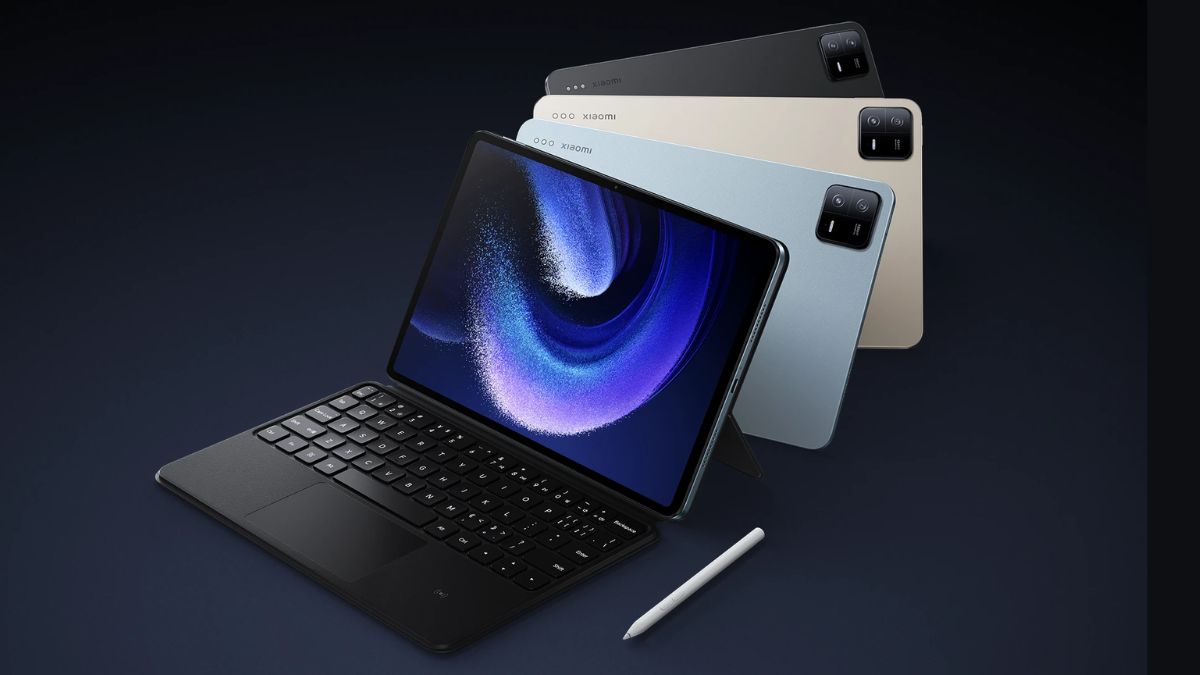
In the hyper-competitive mobile market of India, tablets have once again come to the forefront as tools for big-screen entertainment on the go. And, to take on the rising competition, Xiaomi unveiled its latest Xiaomi Pad 6, which offers a sleek design, powerful hardware, and value-for-money features for those looking to upgrade their portable entertainment experience.
Choosing the right tablet can be a challenging decision, as both the Xiaomi Pad 6 and OnePlus Pad offer unique features and advantages. So, whether you’re a student, a creative professional, or a tech enthusiast looking for a secondary entertainment and productivity device, here is a neutral comparison between the Xiaomi Pad 6 and OnePlus Pad to determine which one offers the most bang for your buck. From display quality and performance to software and battery, find out which one is the best.
Xiaomi Pad 6 vs OnePlus Pad: Price in India
- Xiaomi Pad 6: The tablet has been priced in India at Rs 26,999 for the base 6GB RAM and 128GB storage variant, while the top-end variant with 8GB RAM and 256GB storage has been priced at Rs 28,999. The Xiaomi tablet is available in Graphite Grey and Mist Blue colour options.
- OnePlus Pad: The tablet has been priced in India at Rs 37,999 for the base 8GB RAM and 128GB storage variant, while the top-end variant with 12GB RAM and 256GB storage has been priced at Rs 39,999. The OnePlus tablet is available in a single colour variant – Halo Green.
Xiaomi Pad 6 vs OnePlus Pad: Specs at a glance
| SPECS | XIAOMI PAD 6 | ONEPLUS PAD |
| Chipset and RAM | Qualcomm Snapdragon 870, 6GB/8GB RAM | Mediatek MT6983 Dimensity 9000, 8GB/12GB RAM |
| Display | 11-inch Quad-HD+ IPS LCD, 144Hz refresh rate | 11.61-inch Quad-HD+ IPS LCD, 144Hz refresh rate |
| Rear camera | 13MP | 13MP |
| Front camera | 8MP | 8MP |
| Battery and charging | 8,840mAh, supports 33W PD3.0 wired charging | 9,510mAh, supports 67W wired charging |
Xiaomi Pad 6 vs OnePlus Pad: Design and dimensions

The Xiaomi Pad 6 comes in at a significantly lighter body weight of 490 grams compared to the 552 grams on the OnePlus Pad, which is due to a lower battery capacity of 8,840mAh vs 9,510mAh, respectively.
Other than that, the length of the Xiaomi Pad 6 and OnePlus Pad (254mm vs 258mm) and the thickness (6.5mm for both) are identical for both tablets, although the width of the Xiaomi Pad 6 (165.2mm) is lesser than that of the OnePlus Pad (189.4mm).
As for design, both tablets are rather minimal looking with a seamless 11-inch display design up front and a camera module and plain sheet at the back.
Xiaomi Pad 6 vs OnePlus Pad: Display
The Xiaomi Pad 6 has an 11-inch IPS LCD display with a resolution of 1800 x 2880 pixels, a pixel density of 16:10, and a screen-to-body ratio of 83.6%. The display has a 144Hz refresh rate, too, similar to the one on the OnePlus Pad. This is especially helpful for bigger tablet screens as it aids in smoother animations and scrolling, especially when you are using apps like the phone’s home screen, web browser, and social media apps. It is also a good feature to have if you are into tablet gaming.
The OnePlus Pad has a slightly larger 11.61-inch IPS LCD display, but nothing that would make the Xiaomi Pad 6 a dealbreaker. And, it has a slightly better screen-to-body ratio of 84.2%, but again, nothing that would make you switch.
Xiaomi Pad 6 vs OnePlus Pad: Processor
The new Xiaomi Pad 6 is powered by the relatively Qualcomm Snapdragon 870 processor. The Snapdragon 870 is an 8-core chipset from two years back, which comes with a 7nm architecture and 5G support. This means that the Xiaomi Pad 6 can handle quite a lot of demanding tasks and also support high-speed cellular connectivity on the go.
On the other hand, the OnePlus Pad comes with the Mediatek MT6983 Dimensity 9000, which has a 4nm architecture and is coupled with the Mali-G710 MC10 GPU, compared to the Adreno 650 GPU on the Pad 6’s Snapdragon 870 chipset. This one, too, is highly capable of offering nothing but a premium experience.
Xiaomi Pad 6 vs OnePlus Pad: RAM

The Xiaomi Pad 6 has 6GB and 8GB of RAM. However, the OnePlus Pad has 8GB and 12GB RAM options, which is certainly an upgrade. More RAM means that the tablet can handle more apps and tasks at the same time without slowing down. For example, you can have multiple apps open in the background without having to worry about them reloading when you switch back to them. The only silver lining here is that the top end variant of the Xiaomi Pad 6 and the base variant of the OnePlus Pad have the same amount of RAM, 8GB, but the former is priced significantly lower.
Xiaomi Pad 6 vs OnePlus Pad: Storage
The Xiaomi Pad 6 comes with 128GB and 256GB options of storage space, which is the same as the OnePlus Pad. There is no upgrade option available in both cases.
Xiaomi Pad 6 vs OnePlus Pad: Rear cameras
Starting off, both the Xiaomi Pad 6 and the OnePlus Pad have 13MP shooters at the back, with a similar f/2.2 aperture. Both shoot 4k video at 30fps and 1080p video at 30 and 60fps, but the only area where the Xiaomi Pad 6 might have an advantage is the dual LED flash compared to the single LED flash on the OnePlus Pad. Both of these are tablets, which are not really known for camera prowess, but it is good to have these features.
Xiaomi Pad 6 vs OnePlus Pad: Front cameras
While the rear camera might not be too relevant on premium tablets, selfie camera is still useful for selfies and video calls. The Xiaomi Pad 6 has an 8MP selfie shooter, with f/2.2 aperture and 1080p video recording at 30fps. The OnePlus Pad also has an 8MP selfie camera that comes with a wide f/2.3 aperture and the same video recording capabilities.
Xiaomi Pad 6 vs OnePlus Pad: Battery

This is an area where the OnePlus Pad really shines ahead of its Xiaomi counterpart. You get a massive 9,510mAh battery on the OnePlus Pad compared to the 8,840mAh battery on the Xiaomi Pad 6. Plus, the OnePlus Pad supports 67W wired charging, which is more than double that of the Xiaomi Pad 6’s 33W charging support. Clearly, in this department, OnePlus triumphs.
Xiaomi Pad 6 vs OnePlus Pad: Software
The Xiaomi Pad 6 runs MIUI 14 on top of Android 13 out of the box, which is what Xiaomi has been using on its latest smartphones and tablets. The OnePlus Pad also runs Android 13 with OxygenOS 13.1 on top.
Key takeaways
In conclusion, while the OnePlus Pad might have a bigger battery with faster-wired charging and a slightly more optimised selfie camera, the Xiaomi Pad 6 wins on the price front. It is priced significantly lower than its counterpart, albeit with some minor compromises. If you are someone who is looking for a tablet to be used for streaming content, playing regular games, reading e-books, and other casual activities, the Xiaomi Pad 6 is definitely the more rational choice for you. Although if prefer better hardware and battery is a priority for you, go for the OnePlus Pad.




![Best affordable tablets for entertainment in India [July 2023]: Xiaomi Pad 6, OnePlus Pad, and more Thumbnail](https://www.91-cdn.com/hub/wp-content/uploads/2023/06/xiaomi-pad-6-image.jpg?tr=h-110,q-100,pr-true)












